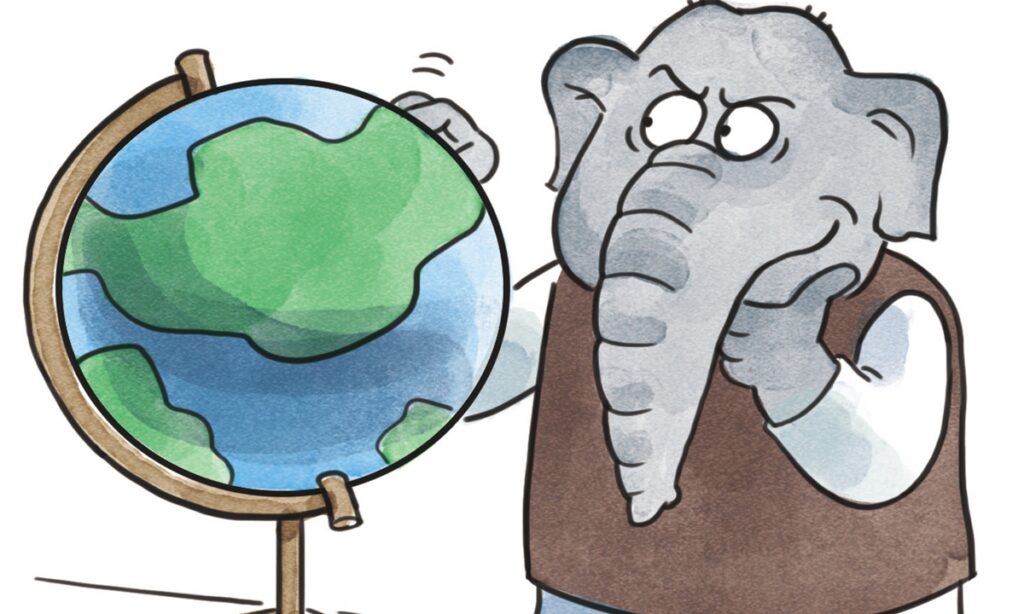India’s mentality toward multilateral mechanisms has been changing. The trend is particularly obvious this year.
On the one hand, New Delhi hopes to become a leading force to reshape the current international order. On the other hand, its multilateral diplomacy has increasingly become pro-West and Sinophobic. India is less interested in multilateral mechanisms where China plays a leading role.
There are multiple reasons behind the shift, but a most significant one is that the country is changing its identity.
To begin with, India wants to play a leading role. On the multilateral stage, New Delhi is gradually abandoning its previous postures of balanced diplomacy.
To highlight its position as a leading force, New Delhi is increasingly unwilling to let China play an important role in any multilateral mechanism. India tends to disrupt China’s agenda in multilateral mechanisms with the excuse that China’s agenda cannot represent developing countries’ interests.
Clearly, India wants to prevent multilateral mechanisms from boosting China’s rise. In the BRICS and SCO, India rarely makes efforts to promote internal unity, but tries to dismantle aspects of them from within.
India also pulls out of deals that it cannot play a dominant role. For example, the Modi administration has withdrawn from the Regional Comprehensive Economic Partnership negotiations.
Moreover, India wants to be the leader of the developing countries.
Since China became the second-largest economy in 2010, many developed countries have clamored to refuse China’s status as a developing country. India therefore hopes to replace China to become the leader of developing countries. New Delhi believes this is a natural return because India was respected as a leader of developing countries during the Nehru era.
China and India used to work together to promote an international political and economic order that would be fair and benefit developing countries. But in recent years, the favorable atmosphere for China-India cooperation on multilateral occasions has gradually faded. The widening gap between the two countries’ development has led to growing differences in their demands and gradually eroded the foundation of China-India multilateral cooperation, especially on matters such as regional and global governance.
Additionally, India wants to be the net security provider of the Indian Ocean.
Based on the unique geographical advantages, Indian elites generally have a “Monroe Doctrine” complex regarding South Asia and even regard the Indian Ocean as its pond.
With the continuous advancement of the China-proposed Belt and Road Initiative in South Asia and the Indian Ocean region, New Delhi feels it is difficult to maintain a dominant position in the region by itself. To this end, it has worked hard to align itself with the US Indo-Pacific strategic framework.
India has also taken the lead in planning small-scale multilateral cooperation mechanisms in the Indian Ocean. For example, in September, India, France and Australia held the first trilateral dialogue to enhance cooperation in the Indo-Pacific region. The three sides have agreed to hold annual dialogues.
Lastly, India wants to be a member of the so-called value alliance.
India describes itself as the largest democratic country in the world. It believes it has many connections with American and Western value systems. Based on this, Indian political elites naturally tend to stand with the US and the West to launch an ideological offensive against China.
Indian elites tend to believe that multilateral cooperation with like-minded countries is bound to achieve long-term progress. In India’s view, China is its top geopolitical competitor. Ergo, even China-India cooperation on development and international issues is not enough to change this fact. This explains why India has lost enthusiasm for small-scale multilateral mechanisms where China plays an important role and is more interested in promoting multilateral mechanism with the US and the West.
The author is director of the Institute for South Asian Studies at the China Institutes of Contemporary International Relations.
Illustration: Liu Rui/GT


